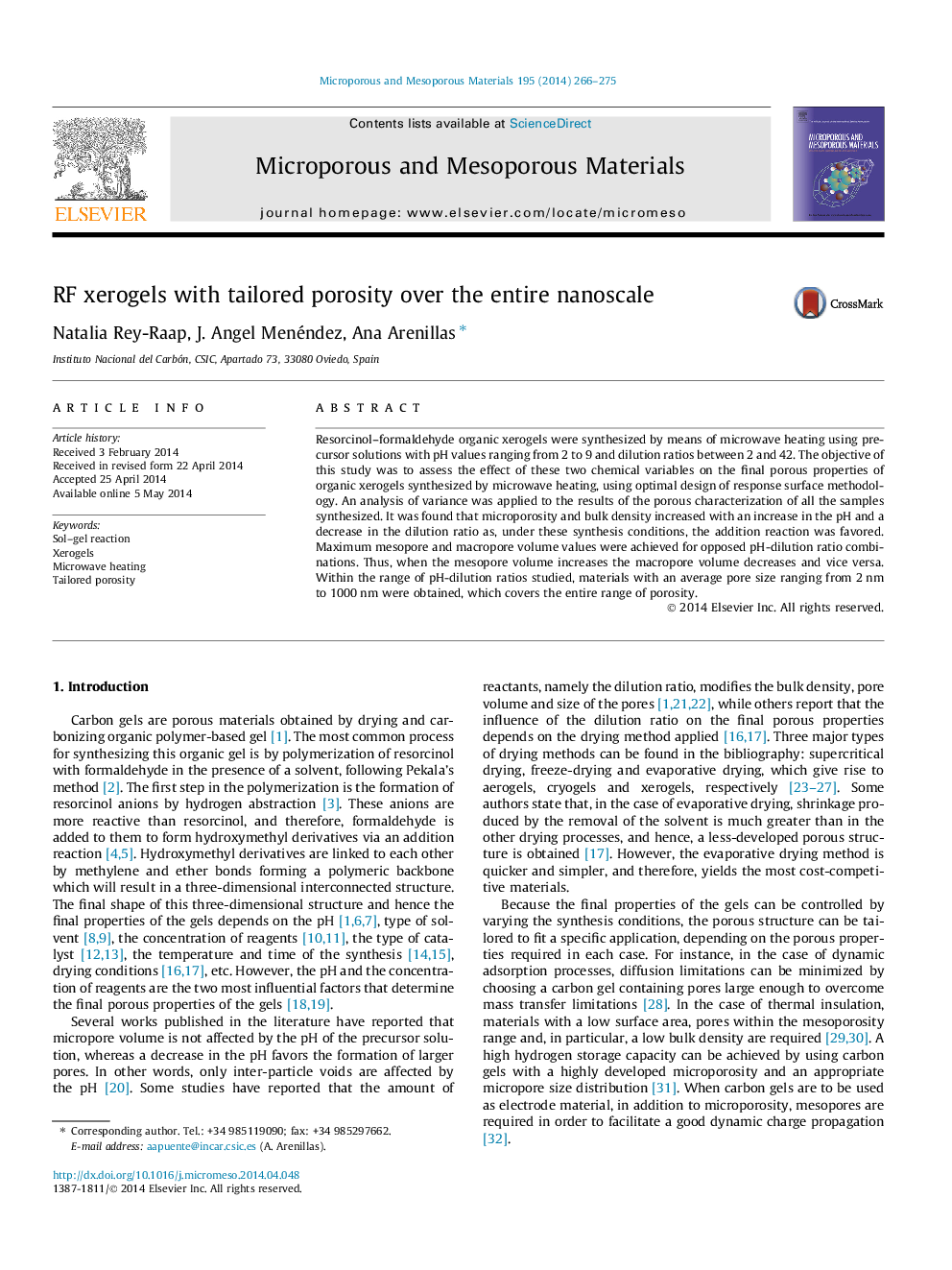| Article ID | Journal | Published Year | Pages | File Type |
|---|---|---|---|---|
| 73120 | Microporous and Mesoporous Materials | 2014 | 10 Pages |
•pH and dilution ratio are interrelated and influence on pore size in RF xerogels.•Response surface methodology provides the required conditions for tailored porosity.•RF xerogels over the entire range of porosity can be obtained by microwave heating.
Resorcinol–formaldehyde organic xerogels were synthesized by means of microwave heating using precursor solutions with pH values ranging from 2 to 9 and dilution ratios between 2 and 42. The objective of this study was to assess the effect of these two chemical variables on the final porous properties of organic xerogels synthesized by microwave heating, using optimal design of response surface methodology. An analysis of variance was applied to the results of the porous characterization of all the samples synthesized. It was found that microporosity and bulk density increased with an increase in the pH and a decrease in the dilution ratio as, under these synthesis conditions, the addition reaction was favored. Maximum mesopore and macropore volume values were achieved for opposed pH-dilution ratio combinations. Thus, when the mesopore volume increases the macropore volume decreases and vice versa. Within the range of pH-dilution ratios studied, materials with an average pore size ranging from 2 nm to 1000 nm were obtained, which covers the entire range of porosity.
Graphical abstractFigure optionsDownload full-size imageDownload as PowerPoint slide
